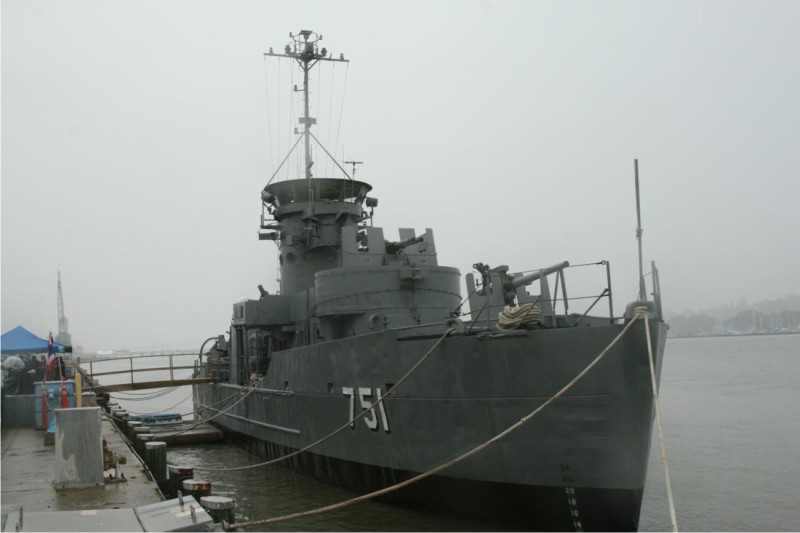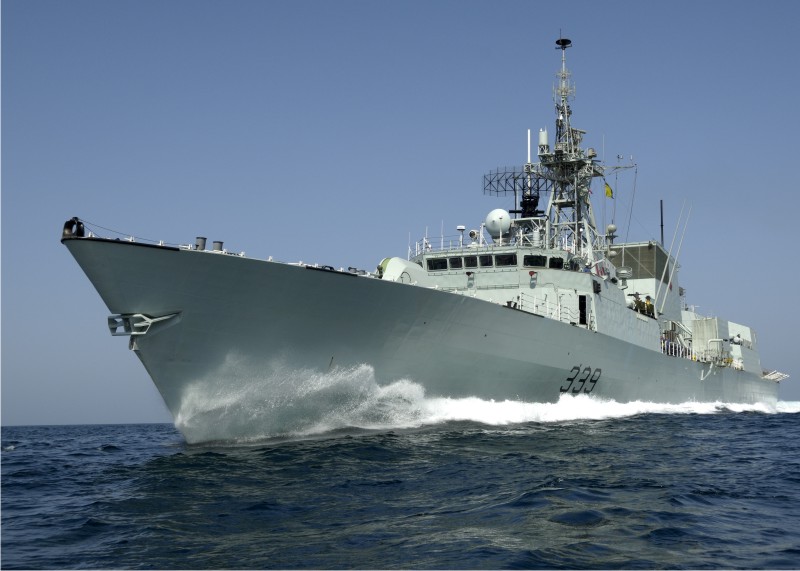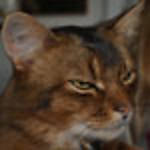
Ahoy mates and welcome to MSW’s Scuttlebutt! Let’s see what going on today.

Victory at Sea – Battle of the Yellow Sea
In a new feature brought to you by the MSW news staff, Victory at Sea will bring you the blow by blow narrative of famous and not so famous naval battles on the anniversary of that battle.
Victory at Sea

This Day in U.S. Naval History
1813 - In the Battle of Lake Erie, Commodore Oliver Hazard Perry, flying his "Don't give up the ship" flag, defeats British squadron and says: "We have met the enemy, and they are ours..."
1925 - Submarine R-4 (SS 81) rescues crew of PN-9 plane 10 miles from their destination of Hawaii.
1945 - Carrier Midway (CVB 42) commissioned.
1961 - World's first nuclear-powered guided-missile cruiser, Long Beach (CGN 9) is commissioned.
GE LM2500+G4 Gas Turbine Module Delivered By Avio for First FREMM Frigate
GE Marine reports that the first LM2500+G4 aeroderivative marine gas turbine module has been delivered by Avio to DCNS' shipyard in France. The engine will be the basis for the COmbined Diesel eLectric And Gas turbine (CODLAG) propulsion system that will power the French Navy's first European Multi-Mission Frigates (FREMM) ship.
Avio, Torino, Italy, is a GE Marine Systems Supplier, as well as the prime contractor for the FREMM gas turbine system. The French and Italian Navies are jointly developing the FREMM program, and combined, the navies are slated to build a total of 27 next-generation frigates. Avio has ordered the initial three LM2500+G4 gas turbines, two of which have already been delivered to Avio's facility in Brindisi, Italy.
Earlier in 2008, GE reported the successful completion of the entire 500-hour qualification test for the LM2500+G4 gas turbine at the company's Evendale, Ohio test cell. The rigorous testing plan devised by GE was tailored so that the engine will be certified by three key organizations: Bureau Veritas, RINA S.p.A. and American Bureau of Shipping (naval vessel rules).
Introduced in October 2005, the G4 version of the popular LM2500 family offers 17% more power than its LM2500+ predecessor, and has a 6% increase in airflow over the current LM2500+ model. The LM2500+G4 is expected to provide the same 99.6% reliability of the LM2500, which currently has a fleet of more than 2,000 gas turbines in diverse marine and industrial applications.
GE Marine is one of the world's leading manufacturers of marine products and services, including aeroderivative gas turbines ranging from 6,000 to 57,300 shaft horsepower.
Bedford County man recalls role of Mighty Midgets
Pete Jensen, a Bedford County man, made a pilgrimage recently to Mare Island in Vallejo, Calif., for a ceremony honoring the last of the Mighty Midgets.
Mighty Midget was the name given to a class of Navy vessels developed late in World War II. They were the craft that everybody wished they’d had at D-Day. Based on the LCS hull, a type of large landing craft, these vessels could accompany landing craft right to the shore during an amphibious assault.

Flat bottomed, they could even run aground and winch themselves free, if necessary. They were designed to blast the beach with rockets that, unlike the rockets fired at D-Day, actually made it to the beach. They could also provide high volumes of gunfire from rapid fire weapons.
A total of 130 were built. At the end of the war, they were all either scrapped or sold to foreign navies. A group of veterans of these vessels discovered the last of them, formerly LCS (L) 102, serving with the Royal Thai Navy as a gunboat. She was due to be decommissioned and the old sailors got her, had her hoisted aboard a container ship and transported back to the United States. They are restoring her to her original WWII configuration.
The ships were small. Their heavy load displacement was only 387 tons. They were 185-feet, 6-inches long and 23 feet, 3-inches wide and their eight diesel engines gave them a top speed of 16.5 knots. However, they were heavily armed with four 20mm machine guns and either five or six 40mm guns, or four 40mm guns and a bow mounted 3-inch/50 gun. This gave them the greatest amount of firepower per ton of any ship the Navy built.
“I have never been as excited in my life,” commented Jensen, describing his reaction at seeing the little ship. “It was just like Christmas in July.” The LCS (L) meant a great deal to Jensen, now 82, because one of them, LCS (L) 61, figured prominently in his youth. He was 17 when he enlisted in the Navy and reported for boot camp at Bainbridge, Md., at the beginning of 1944. He and the ship’s crew met their seagoing home in November of that year.
Many of his shipmates, like Jensen, were new to sea duty. The rocking and rolling of the flat-bottomed vessels, which bounced like a cork, gave these fellows a rough time until they got their sea legs.
A portion of a poem by one of Jensen’s shipmates gives a sailor’s view of the experience:
She will rock and roll on the calmest day
She’ll kick like a kangaroo
And pitch in the most peculiar way
Though all is calm and blue
The engineers sit down in their hole
They can’t even hear to think
While the boys topside, as they sway with the roll
Have often wished they would sink
The signalman clings to his light on the conn
While she keels over 50 degrees
And the helmsman struggles to hold her on
Though it’s blowing a very tight breeze
LCS (L) 61 took part in the amphibious assault on Okinawa and only good shiphandling by the commanding officer, Lieutenant James Kelly, only 22 when he took command, prevented her from becoming a kamikaze statistic. The ship’s antiaircraft guns had set a Japanese twin-engine bomber on fire and the pilot attempted to crash into her. Kelly was able to dodge the bomber’s final plunge, which missed by only 20 feet.
Dealing with kamikazes was a major occupation for Mighty Midgets. After troops took the beach, they joined destroyers on antiaircraft picket duty, adding their guns to the tin can’s firepower. They also assisted putting out fires on burning ships that had taken kamikaze hits.
Jensen didn’t know what a close call they had until after the crew secured from general quarters. His battle station was a cramped compartment below deck in the ship’s stern. He heard the antiaircraft guns firing, but didn’t learn the details until after the attack.
Seeing LCS (L) 102 was also emotional for Jensen because there are only 20 men left out of the original 75 man crew of his ship.
“When I stepped aboard that ship and toured it, I could see the members of my crew, deceased and present, in those compartments,” Jensen said. He also climbed down into his old battle station, after steering. It was a bit harder, at 82, to climb through the hatch in the deck and down the ladder, but he made it.
One fact was still the same, however.
“You gotta watch your head,” Jensen said.
He’s 6-feet, 3-inches tall and the compartment’s overhead was too low to allow him to stand up — just like in the old days.
LCS (L) sailors are a rapidly dwindling group. The July ceremony was attended by 125 men who served aboard them and included a memorial service for 43 of their number who had died in the past year. One of them, LT Richard McCool won the Congressional Medal of Honor during the war.
After serving in the United States Navy during World War II in the Pacific Theater, LCS (L) 102 served the Japanese Navy from April 30, 1953, until April 18, 1966. She was then sold to Thailand where she served as the HTMS Nakha until May 22, 2007.
The restoration effort preserves a nod to the little warship’s last military service. Nakha means “Sea Serpent” in Thai and they’ve left the Royal Thai Navy sea serpent emblem on the front of her pilot house. Her U. S. Navy hull number, 102, is painted on her starboard bow, and her Royal Thai Navy hull number, 751, is on her port side.
For more information about Mighty Midgets and photos of the retrieval of LCS (L) 102, go to www.mightymidgets.org.
HMCS Charlottetown Great Lakes Deployment 2008
After a recent deployment to the Middle East, Her Majesty’s Canadian Ship Charlottetown is looking forward to an upcoming sail to the Great Lakes. This trip will give the ship’s company a chance to showcase their accomplishments during their most recent deployment to the Middle East, while allowing the general public an opportunity to meet the Canadian Navy, first hand.

The ship will be open to the general public for tours and demonstrations. HMCS Charlottetown also has the honor of welcoming new Canadian citizens onboard during numerous citizenship ceremonies throughout this trip. The ship will also welcome new enrollees of the Canadian Forces during enrolment ceremonies onboard.
HMCS Charlottetown will be visiting these cities on the following dates:
Montreal, Que. - Sept. 5-8, Old Port, Alexandra Basin, Pier 12
Cleveland, Ohio - Sept. 10-12
Windsor, Ont. - Sept. 12-15, Dieppe Plaza
Port Colborne, Ont. - Sept. 16-17, Snider's Terminal, Wharf 16
Toronto, Ont. - Sept 18-22, foot of Yonge St
Hamilton, Ont. - Sept. 22-25, Pier 8 East (near HMCS Haida)
Oshawa, Ont. - Sept. 25-29, West Wharf
Cornwall, Ont. - Sept. 30-Oct. 2, Government Wharf
Sept Iles, Que. - Oct. 4-Oct. 6, Quai Monseigneur-blanche
Charlottetown, PEI - Oct. 7-9, Cruise Ship Jetty
The ship’s company of HMCS Charlottetown looks forward to hosting you onboard this fall!
Photo of the Day

The Australian Navy amphibious ship HMAS Tobruk (LSH 50) arrives at Naval Station Pearl Harbor for Rim of the Pacific (RIMPAC) 2008. RIMPAC is the world's largest multinational exercise and is scheduled biennially by the U.S. Pacific Fleet. Participants include the United States, Australia, Canada, Chile, Japan, the Netherlands, Peru, Republic of Korea, Singapore, and the United Kingdom.
Gator



















